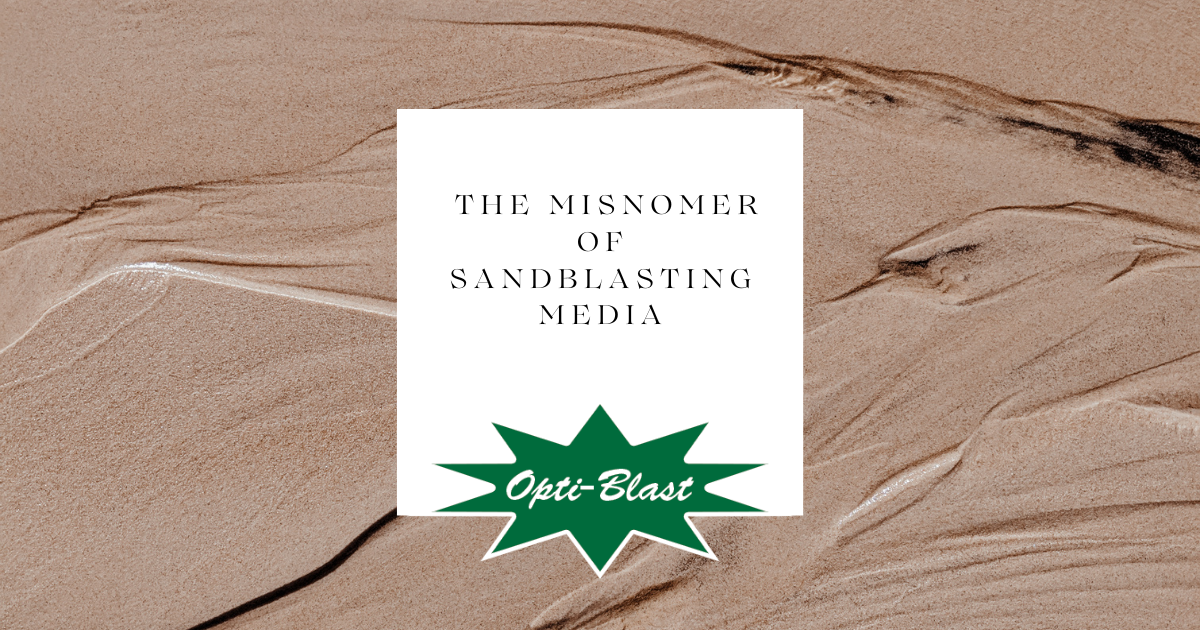Why is it Still Called Sandblasting Media?
Plastic Blast Media, Sandblasting
The term “sandblasting media” is a bit of a misnomer because sand is not commonly used as a blasting material anymore. The use of sand as a blasting media has significantly declined over the years due to health and environmental concerns.
The term “sandblasting” originated from the early days of abrasive blasting, where sand was indeed the primary material used. Sand is a naturally occurring granular material composed of finely divided rock and mineral particles. It was readily available and had desirable abrasive properties for many applications.
However, sandblasting with silica sand presents several health risks. When sand particles are blasted at high velocity, they can break down into fine dust known as respirable crystalline silica. Inhaling this dust can lead to a serious lung disease called silicosis, which can be debilitating or even fatal. Due to the health hazards associated with sand blasting, alternative blasting media have been developed.
Today, a variety of different materials are used as blasting media, depending on the specific application and desired results. These alternatives include materials such as aluminum oxide, garnet, glass beads, steel shot, plastic beads, walnut shells, and many others. These materials are chosen based on their abrasive properties, reusability, environmental impact, and safety considerations.
To avoid confusion, the term “sand blasting media” is still commonly used, even though sand itself is no longer the preferred or recommended blasting material. The term has become somewhat generic, encompassing the broader range of blasting media options available.
Why Plastic Blast Media is the Best Alternative to Sand
Plastic blast media, such as plastic beads or pellets, is often used as an alternative to sand in blasting processes for several reasons:
Safety: Plastic blast media is generally considered safer than sand. Sandblasting with silica sand can release harmful dust particles known as respirable crystalline silica, which can pose serious health risks when inhaled. In contrast, plastic media is non-toxic and does not generate harmful dust, making it a safer option for operators and bystanders.
Environmental impact: Sandblasting with traditional sand can have a significant environmental impact. Sand is often extracted from natural sources, leading to habitat destruction and erosion. Additionally, the used sand may contain contaminants that can be hazardous to the environment when disposed of. Plastic blast media can be recycled and reused, reducing the need for constant extraction of new materials and minimizing waste.
Surface preservation: Plastic media is softer than sand, which makes it ideal for applications where surface preservation is crucial. It can effectively remove coatings, contaminants, and corrosion from delicate surfaces without causing damage or substrate deformation. This makes plastic media suitable for cleaning or stripping surfaces like wood, fiberglass, composites, aluminum, and sensitive metals.
Versatility: Plastic blast media is available in various sizes, shapes, and hardness levels, allowing for customization based on the specific application. Different types of plastic media can be used for tasks ranging from light cleaning and surface preparation to more aggressive paint or rust removal. The versatility of plastic media makes it suitable for a wide range of blasting projects.
Reduced equipment wear: Compared to sand, plastic blast media tends to be less abrasive. This characteristic results in reduced wear and tear on the blasting equipment, including nozzles, hoses, and blast cabinets. Lower equipment wear translates to longer operational life and lower maintenance costs, making plastic media a cost-effective choice in the long run.
Improved visibility: Sandblasting with traditional sand can produce a large amount of dust, which can reduce visibility and potentially create hazardous working conditions. In contrast, plastic media generates minimal dust, providing better visibility during the blasting process. Improved visibility enhances operator safety and allows for more accurate and controlled blasting operations.
It’s important to note that the choice between plastic blast media and sand depends on the specific application, surface requirements, and environmental considerations. Some applications may still necessitate the use of sand or other abrasive media, so it’s essential to evaluate the unique needs of each project before selecting the blasting material.
Call the Experts at Opti-Blast
For proper selection of the right blasting media for your needs, call Opti-Blast. We have been experts in the field of blast media for decades and make our own plastic bead and other specialty blast media right here in the USA. We have media in stock, ready to ship in bulk, and recycling capabilities for you, too. As a manufacturer, supplier, and recycler, we are the complete lifecycle of your media blast maintenance process.
Tags: #sandblasting #blastmedia #plasticblastmedia